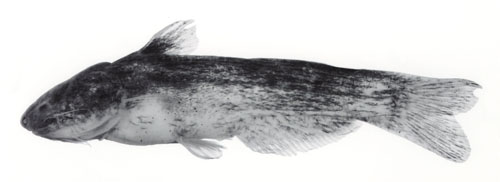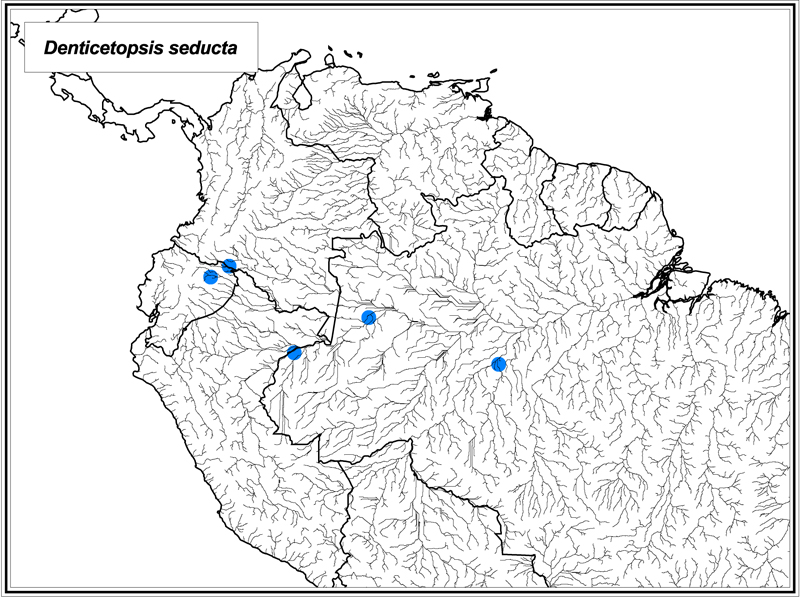
Reproduced from Vari, Ferraris and de Pinna (2005).
Denticetopsis seducta Vari, Ferraris & de Pinna, 2005
Identification: Denticetopsis seducta is distinguished from D. royeroi and D. sauli by the combination of the lack of elongate, symphyseal teeth on the dentary, a reduced lateral line extending posteriorly on the body beyond the abdomen onto at least the caudal peduncle, the presence of dentition on the vomer, a dorsal fin with 5 or 6 segmented rays and with the first ray that is spinous basally, a symmetrical, shallowly-forked caudal fin, and the possession of horizontally-elongate, dark, stellate chromatophores when the chromatophores are expanded. Denticetopsis seducta differs from D. epain the relative position of the origin of the anal fin (located distinctly anterior of vertical through middle of TL versus approximately at vertical through middle of TL, respectively) and the relative depth of the caudal peduncle versus the length of the caudal peduncle (depth/length 1.33-1.5 versus 1.15-1.3, respectively). Denticetopsis seducta differs from D. macilenta in the position of the middle of the orbit (located at anterior 0.25-0.27 of HL versus 0.18-0.19 of HL, respectively) and in the relative width of the head (head width/HL 0.61-0.70 versus, 0.77-0.84, respectively). Denticetopsis seductadiffers from D. praecox in the number of premaxillary tooth rows (three rows of teeth present in all but smallest examined specimens versus two rows of teeth present at all body sizes, respectively), in the pigmentation of the caudal fin (without a distinct, pale region in the distal portions of the middle fin rays versus the presence of a distinct, pale region in the distal portions of the middle fin rays, respectively), and in the degree of pigmentation of the pectoral fin (heavily pigmented versus lightly pigmented, respectively). Denticetopsis seducta differs from D. iwokrama in the number of caudal (26 to 31 versus 32, respectively), preanal (14 to 17 with 17 in only 1 of 23 specimens examined for this feature versus 17, respectively), and total vertebrae (39 to 42 with a mode of 40 and 42 in only 1 of 31 specimens examined for this feature versus 43, respectively) and in the pigmentation of the pectoral fin (heavily pigmented versus lightly pigmented, respectively). Maximum size: 51 mm SL.
Range: Denticetopsis seducta has a relatively wide, albeit scattered, distribution in the central and western portions of the Amazon basin and possibly the southwestern portions of the Rio Orinoco basin.
Information from Vari, R. P., C. J. Ferraris Jr. & M. C. C. de Pinna. 2005. The Neotropical whale catfishes (Siluriformes: Cetopsidae: Cetopsinae), a revisionary study. Neotropical Ichthyology 3:127-238.
